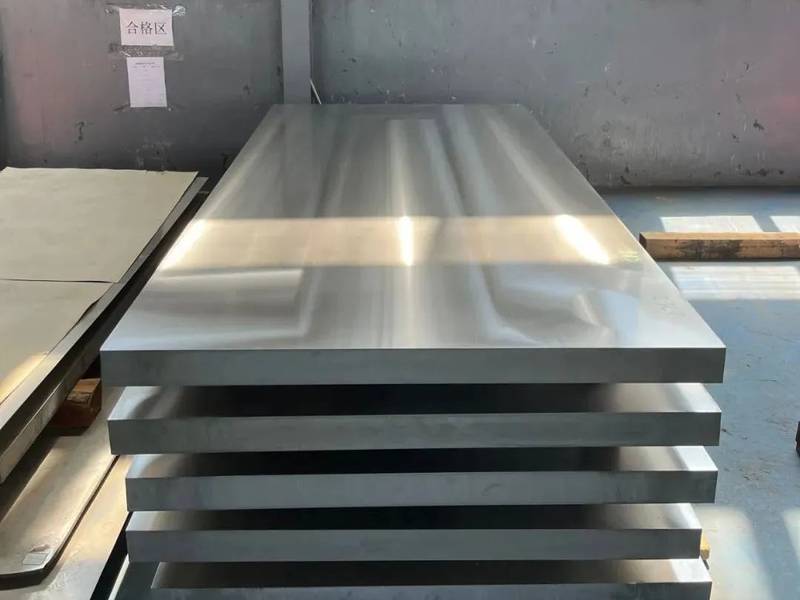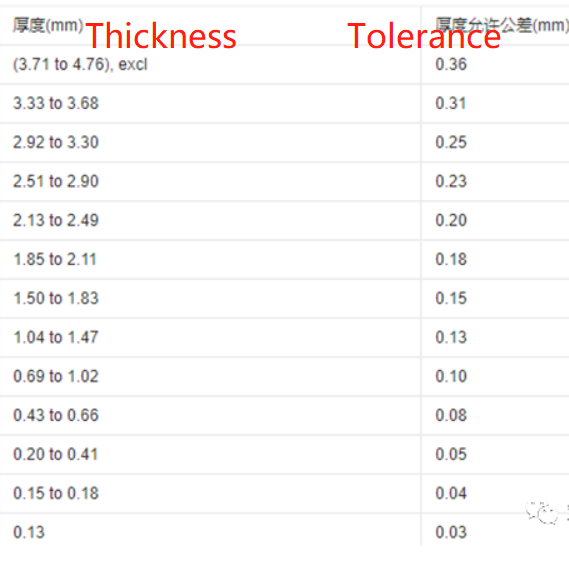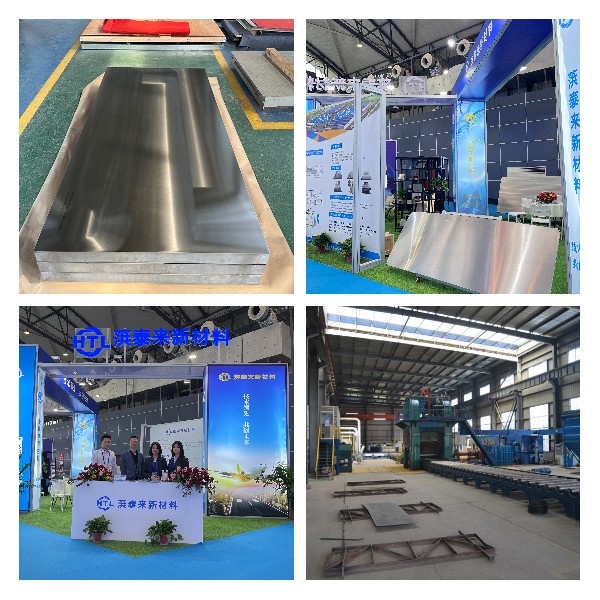Titanium plate is a metal plate manufactured using titanium as the raw material. Titanium is a very special metal, known for its lightweight yet strong and corrosion-resistant properties. Unlike silver, it does not tarnish and maintains its original color at room temperature throughout its lifetime. Titanium has a melting point similar to that of platinum and is widely used in industries such as metallurgy, electronics, medical, chemical, petroleum, pharmaceuticals, and aerospace.

Standards:
Standards include but are not limited to: AMS4900, AMS4901, AMS4902, AMS4904, AMS4907, AMS4911, AMS4914, AMS4916, AMS4919, ISO5832-2/3, ASTM F136, ASTM F67, GJB2505, GB/T3621, ASTM B265.
Grades:
GR1、GR2、GR3、GR5、GR7、GR12,etc.
The allowed deviation of thickness for titanium plate is as follows:
For American standards, the deviation is 0.05% for GR1-GR7 and 0.1% for GR8-GR12.

Manufacturing Processes of Titanium Plate:
- Hot Forging: A forging process carried out above the recrystallization temperature of the metal.
- Hot Rolling: A rolling process conducted at a temperature higher than the recrystallization temperature.
- Cold Rolling: A rolling process performed at a temperature lower than the recovery temperature, where plastic deformation occurs.
- Annealing: A metal heat treatment process that involves slowly heating the metal to a specific temperature, holding it for a sufficient time, and then cooling it at an appropriate rate (usually slow cooling, sometimes controlled cooling).
- Acid Pickling: Immersing the workpiece in a water solution containing sulfuric acid to remove oxide films and other contaminants from the metal surface. It is a pre-treatment or intermediate treatment for processes such as electroplating, enamel coating, and rolling.
Characteristics of Titanium Plate:
- The oxide film on the surface of the titanium plate acts as a durable and effective anti-adhesive agent. The use of titanium plate eliminates the need for a separating agent, making it easy to peel off the electrodes and eliminating the need for pre-treatment. Titanium plates are also half the weight of copper plates.
- The lifespan of titanium plate is more than three times that of copper plates and can reach 10 to 20 years depending on operating conditions.
- Electrolytic copper produced using titanium plates has a dense and smooth crystal structure, resulting in superior quality.
- Titanium plates do not require the application of separating agents, thus avoiding contamination of the copper electrolyte.
- Improved productivity and reduced production costs of electrolytic copper, resulting in better economic benefits.
Surface Quality of Titanium Plate:
- The surface of the plate should be smooth and exhibit the natural color of the metal. Supplying the plate with a sandblasted surface is acceptable.
- Slight dullness, localized watermarks, and minor scratches, indentations, or pits that do not exceed half the thickness tolerance are allowed but should ensure the minimum thickness is maintained.
- Macroscopic defects such as cracks, peeling, oxidation, folding, and metal/non-metal inclusions, as well as traces of excessive alkaline cleaning, are not permitted on the surface of the plate.
- Localized defects along the rolling direction are allowed, but the thickness of the plate after removal of these defects should not be less than the minimum allowed thickness.
- When there are special surface quality requirements for the plate, supply can be negotiated between the supplier and the buyer.
